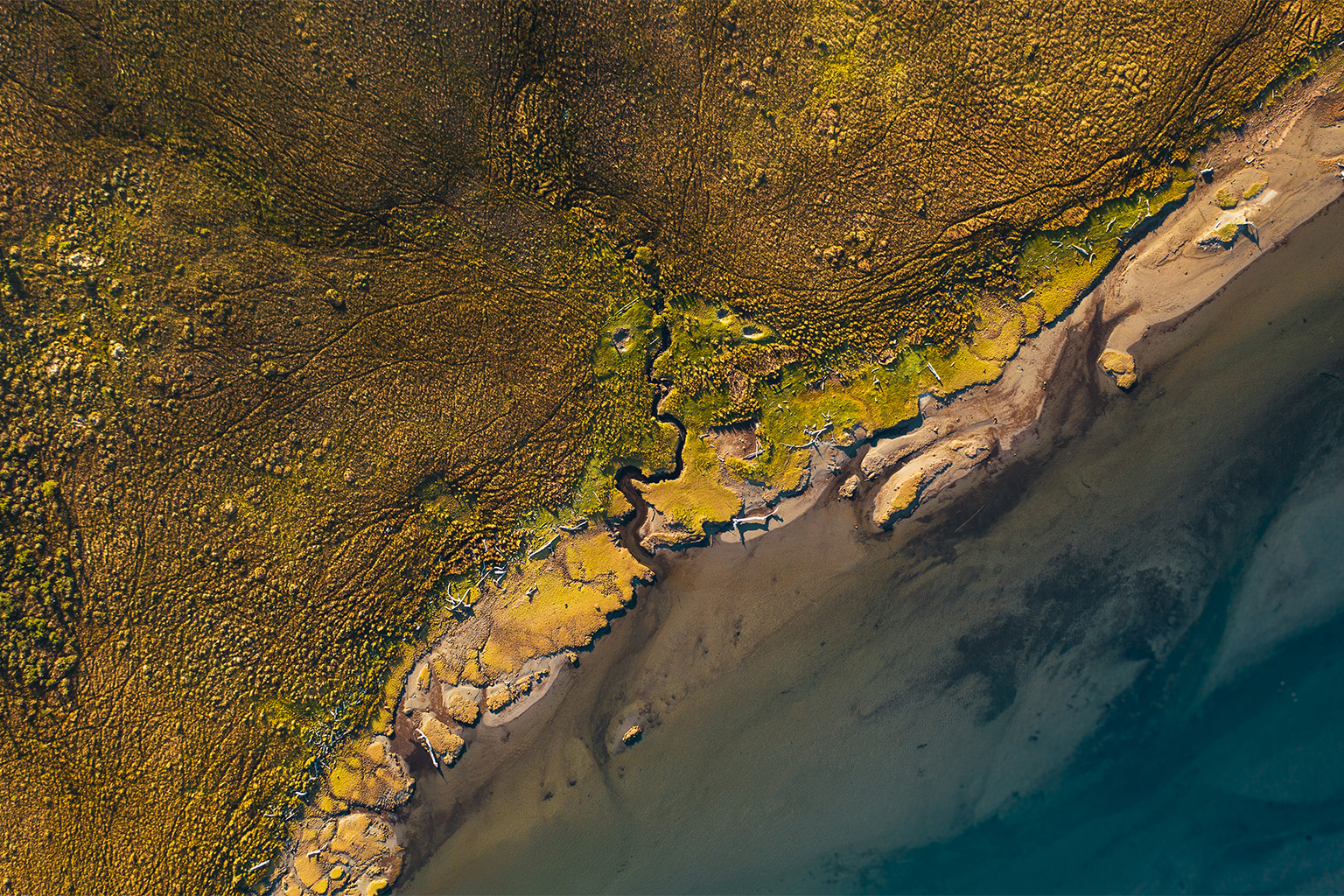- Argentinian legislators recently approved a law to permanently protect the Mitre Peninsula at the tip of South America, which harbors vast peatlands and kelp forests that host an assortment of species.
- The Mitre Peninsula is thought to hold about 84% of Argentina’s peatlands, which are known to sequester about 315 million metric tons of carbon dioxide, roughly equivalent to three years of emissions in Argentina.
- The region also holds more than 30% of the world’s kelp forests, another key store of carbon.
On Dec. 6, legislators in Argentina’s southernmost province of Tierra del Fuego approved a law to permanently protect the land and sea of the Mitre Peninsula at the tip of South America, considered to be one of the region’s last wild places.
The Mitre Peninsula is known to encompass Argentina’s most important carbon sink through a range of peatlands and the surrounding ocean swirls with giant kelp forests. The newly protected area will span 486,000 hectares (1.2 million acres) — about three times as big as London — and create a haven for numerous species, such as the endangered southern river otter (Lontra provocax).
Sofia Heinonen, the director of Rewilding Argentina, said conservationists, scientists, policymakers and community members worked for about 30 years to establish the Mitre Peninsula as a protected area. The global movement to protect peatlands and other natural places in an effort to combat climate change likely spurred the government’s decision, she said.

“It’s incredible,” Heinonen told Mongabay. “It was really a party [when we found out]. We were all jumping.”
The protected area will comprise 300,000 hectares (741,000 acres) of land and the remaining part of ocean. The peatlands will likely be fully protected from human activities, while some forms of tourism will be allowed in other parts of Mitre Peninsula. And more than a quarter of the marine protected area will be a no-take zone, while other areas will be used for multiple purposes.
Across its moss-covered landscape, the Mitre Peninsula holds about 84% of Argentina’s peatlands, which are known to sequester about 315 million metric tons of carbon dioxide, roughly equivalent to three years of emissions in Argentina. The area’s many forests, mountain ranges, valleys and waterways provide habitat for many species, including the Andean condor (Vultur gryphus), steamer duck (Tachyeres spp.), guanaco (Lama guanicoe), red fox, and the southern river otter.
The surrounding seas, which include kelp forests and rocky reef ecosystems, also support a diversity of species, including penguins, sea lions and soft corals. Scientists believe the region harbors more than 30% of the country’s kelp forests.

“This region is one of the last global refuges for kelp forest ecosystems and supports large populations of seabirds, marine mammals and has high biodiversity value due to high endemism and distinctive community composition,” Alan Friedlander, a scientist with positions at both the University of Hawai‘i and the National Geographic Society, who has researched the kelp forests of Tierra del Fuego, told Mongabay in an email. “Despite climate change and other stressors, these kelp forests have remained remarkably unchanged over time and this new protection provides hope that this unique ecosystem will persist well into the future.”
Jenn Caselle, a research biologist at the University of California, Santa Barbara, who has also studied the kelp forests in this area, said that protecting land adjacent to coastal habitat “might be key to both maintenance and recovery of kelps.”
“The Mitre Peninsula contains spectacular examples of relatively untouched kelp forests and this protection will help ensure that these systems persist,” she told Mongabay in an email.
Before becoming a protected area, the Mitre Peninsula’s fate hung in the air. Conservationists say the area was previously threatened by several activities, including salmon farming and the construction of a road, which would have encouraged human encroachment into the region.

In 2021, Tierra del Fuego passed a law to ban salmon farming from the Beagle Channel, a waterway that borders the Mitre Peninsula on the south, which was the only place in Argentina where the industry could have operated.
Alejandro Valenzuela, a conservation biologist at the National University of Tierra del Fuego and global coordinator for the IUCN otter specialist group, said the Península Mitre Natural Protected Area will create a stronghold for the southern river otter, and that the region is an essential biological corridor for the species.
“When you have an endangered species within a small range, the most important areas for those species are not the core areas, but the external areas,” Valenzuela told Mongabay. “Because what you don’t want is a species to start losing distribution, and the place where they lose distribution is on the tips of the distribution.”
It’s estimated that there are only about 50 individual otters left in Tierra del Fuego, according to Valenzuela.
“I’m really happy [the protected area] was approved,” he said, “but we need to keep working in order that the area is actually implemented.”
Banner image: Kelp forest in Mitre Peninsula, Argentina. Image by Joel Reyero.
Related reading:
Scientists plead for protection of peatlands, the world’s carbon capsules
Elizabeth Claire Alberts is a staff writer for Mongabay. Follow her on Twitter @ECAlberts.
FEEDBACK: Use this form to send a message to the author of this post. If you want to post a public comment, you can do that at the bottom of the page.
